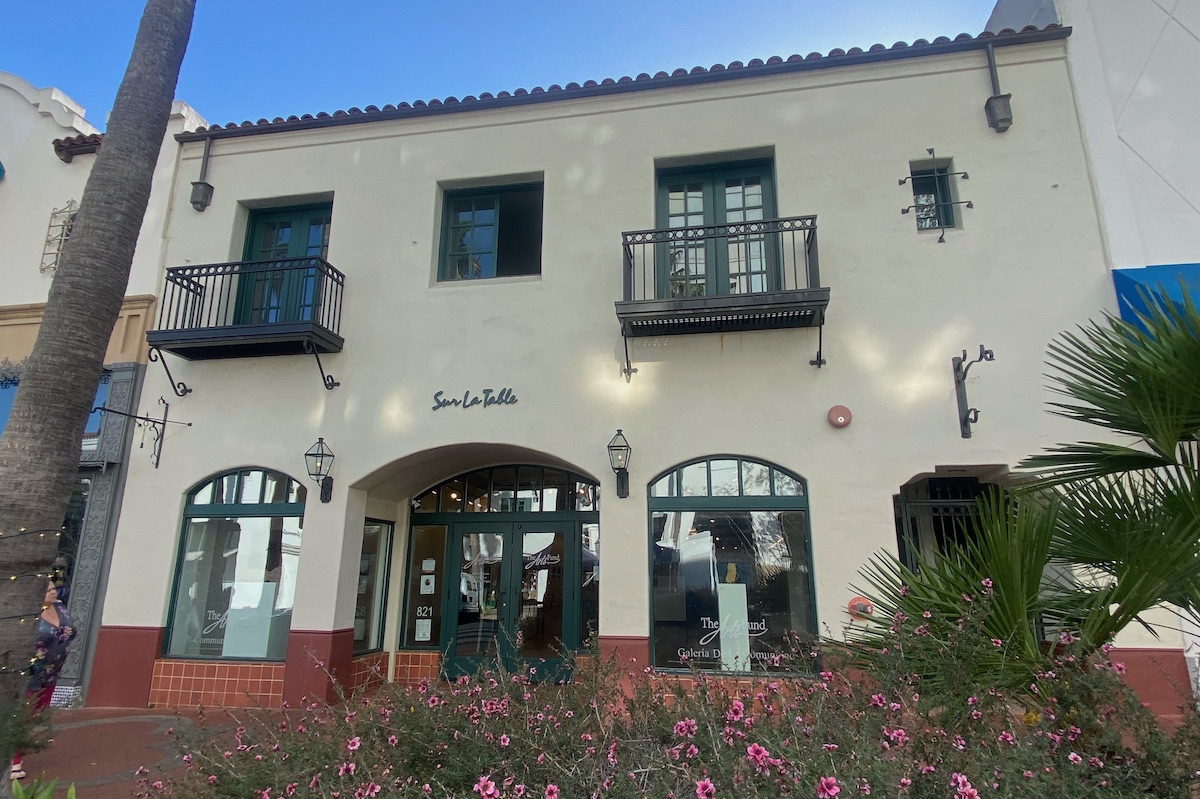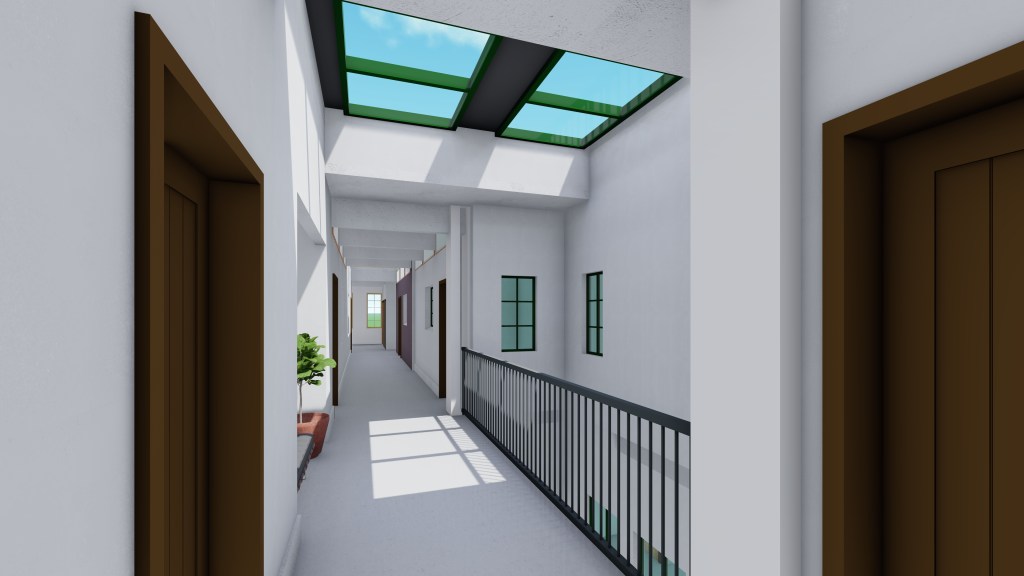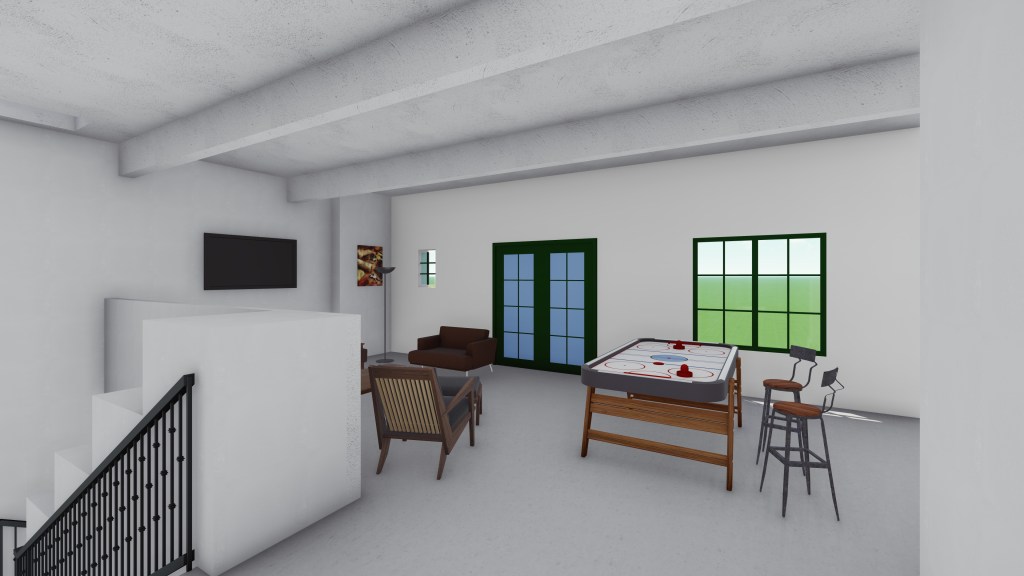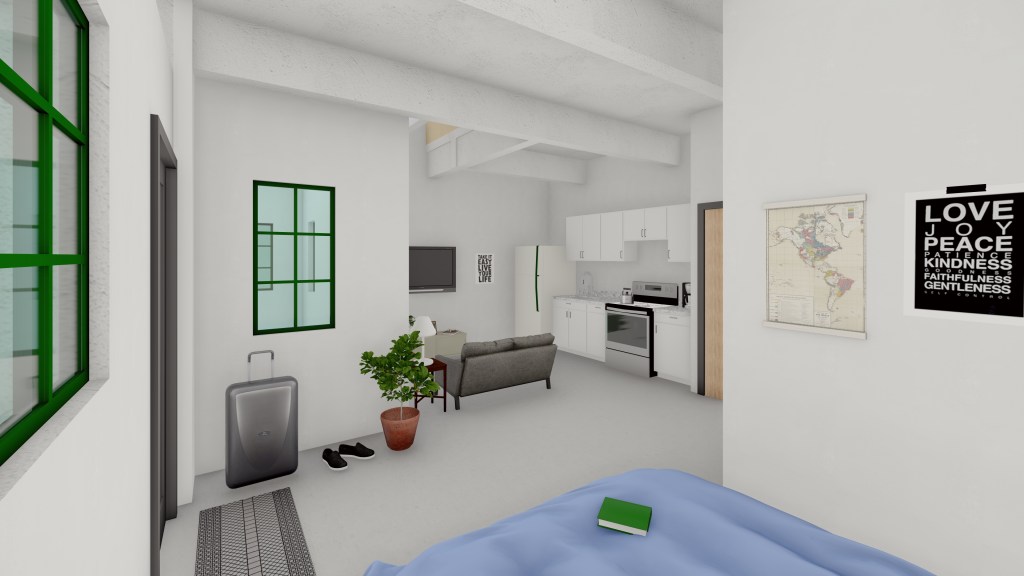
Jason Yardi Gets Permits to Build 14 Units of Workforce Housing in Former Home of Sur La Table

By Nick Welsh
Tue Dec 13, 2022 | 5:11pm
For the last umpteen years, much of the big talk on rejuvenating downtown has focused on building housing on State Street. But given the astronomical cost of real estate, the even bigger question has been whether such housing could hope to be remotely affordable. Until Jason Yardi showed up on the scene last April and bought 821 State Street — former home of Sur La Table and before that Betty’s Fabrics — there’s been no good answer.
It simply could not be done.
But late last week, Ben Romo — agent, friend, and spokesperson for the media-averse Yardi — described exactly how Yardi got the permits needed to build 14 units of below-market workforce housing right in the heart of downtown across the Street from the El Paseo shopping complex — still dripping with history — and just spitting distance from the Paseo Nuevo mall.

Of those units, three will be affordable to people designated as low-income earners — people making $42,000 to $56,000 a year — and one deemed affordable to people defined as moderate income earners. More amazingly, Romo said, Yardi submitted permit applications this March and they were approved in only seven months, this October. More amazing still, Yardi never had to take his plans for review by the Planning Commission or the Historic Landmarks Commission.
Yardi — an executive at Yardi Systems and son of the founder — had initially been inclined to build a couple luxury units, Romo said, because he was apprehensive of getting sucked into the vortex of red tape for which City Hall is infamous. But high ranking city officials, like City Administrator Rebecca Bjork and Community Development Director Eli Eliason, could not have been more supportive and helpful, Romo said.
The rental units proposed, admittedly, veer from small to tiny. The smallest are 290 square feet; the biggest 501. Ten will be built on the second floor; four will be on the first floor, occupying half the square footage. The other half — facing the front — will remain commercial retail. Mitigating the tightness of the quarters, are the high ceiling heights — 13 feet on the first floor and 11 on the second. Additional storage space is provided in the building’s basement, as well as washing machines and dryers, not to mention bicycle parking. (There’s no vehicle parking provided, and no cars will be allowed.)
Rents range from $901 per month on the low end to $1,750 at the top end. Given that many one-bedroom units are now priced north of $3,000, that qualifies as affordable in Santa Barbara’s excruciating housing market. Architect Brian Cearnal, a 39-year veteran in the field who has design fingerprints over many of the most defining structures built in the past 25 years, said the target demographic are young single people who might otherwise be forced to share space with four to five others. “When you’ve reached that stage of life when you no longer want to worry about who’s taking your milk,” Cearnal said, “this might be the place for you.”
Sign up for Indy Today to receive fresh news from Independent.com, in your inbox, every morning.
In a previous incarnation, Ben Romo had been aligned with the developers Andrew and Jeff Bermant, then on a tear to build what at the time had then just been dubbed “workforce housing.” Since then, Romo has run countless political campaigns — the most recent include those of Congressmember Salud Carbajal and City Councilmember Meagan Harmon — and has emerged as a ubiquitous go-between in Santa Barbara’s sprawling universe of nonprofits. But Romo still remains very much on a tear about “workforce housing.”
For Romo, there are two key take-away points he desperately wants highlighted. The first: workforce housing on State Street is economically viable. It can be done. “We want other developers and owners to think of this as an option,” he said. “This can and will make money.” His second point, however, offers a slightly cautionary caveat; not all buildings are alike, Romo stressed. Not all are so structurally amendable to a rental conversion as the one Yardi bought.

Yardi’s building — a two-story structure — was originally built in in 1913 as a department store by the widow of acclaimed novelist Robert Louis Stevenson. With brick walls and concrete floors, this building — for which Yardi paid $4.2 million — was “built pretty stout,” in the professional estimation of Cearnal. That combination of building materials, Cearnal said, makes the building highly fire resistant. As such, it was exempt from state building code regulations requiring sleeping-quarter windows out of which the occupant can escape if need be. This seemingly technical detail proved critical. It enabled Cearnal and crew to draft plans with interior windows instead that draw upon the building’s “plethora” of skylights for natural light. It didn’t hurt any that the building also came equipped with a functioning elevator, a large basement, and a sprinkler system already installed. Perhaps most critical from a cost-containment basis, Yardi never proposed knocking the existing building down and building something newer, bigger, and inevitably much more expensive in its place. All along, he proposed building within the building’s existing footprints and floor plans.
Because the building is located in the heart of downtown — served by multiple parking structures — no parking spaces were required. Because no changes were proposed to the building’s exterior, no discretionary review boards had to approve the plans. Because of recent tweaks in state housing law, Yardi was allowed to exempt himself from two city rules and regulations that would otherwise have limited his use of the space. In his case, Yardi chose to exempt himself from the city’s interior open space requirements. And because of state and local rules designed to encourage the production of workforce housing, Yardi wound up qualifying for five bonus-density units in addition to the nine to which he was already entitled under the building’s commercial zoning designation.
Because Yardi was willing to provide four capital “A” affordable housing units, he was also entitled to an accelerated approval process. Just for good measure, Yardi, Romo, and Cearnal made a point to meet frequently with city officials well before ever submitting plans. It helped. “We saw them more as thought partners,” Romo said, “than permit processing agents.”
The total cost of construction, Romo said, will be $2 million. This week, Yardi assigned the construction and management burden to the City of Santa Barbara Housing Authority. In addition, he effectively donated the entire property to a nonprofit affiliated with the Housing Authority. For the Housing Authority, Christmas came early this year. “We’ve always been looking for a place on State Street,” said Skip Szymanski, deputy executive director. Szymanski noted that residents will need to work within city limits as a condition of their tenancy. “We want people who don’t have a car and can walk to where they work,” he explained. He said construction should start within a couple months and is anticipated to last five months. For the capital “A” affordable units, the highest rents will be $1,500 a month. For the affordable-by-design units, he said the max will be $1,750.




Artist renderings | Credit: Courtesy
Support the Santa Barbara Independent through a long-term or a single contribution.
